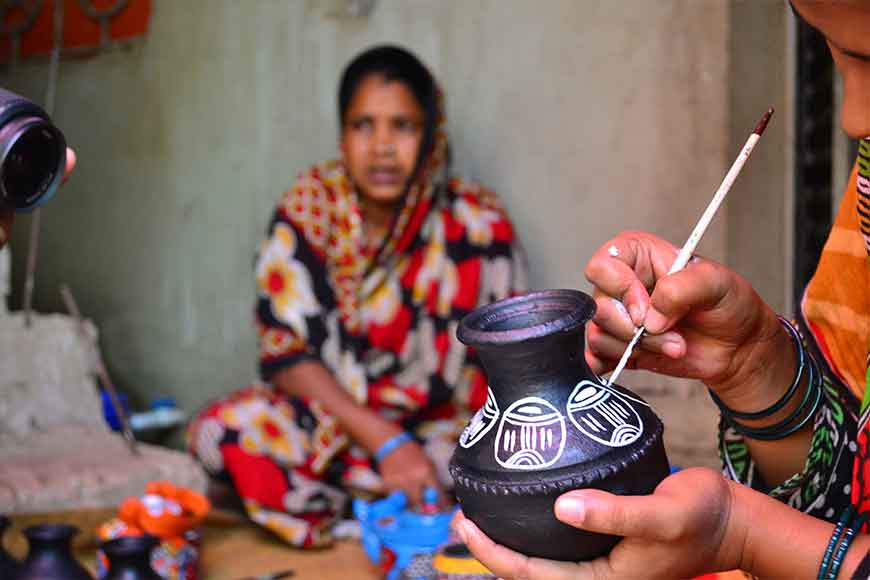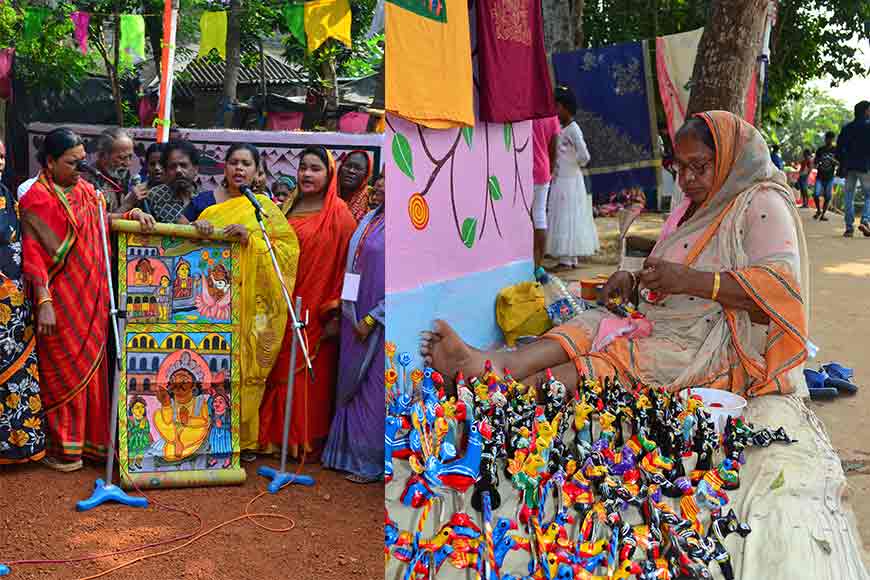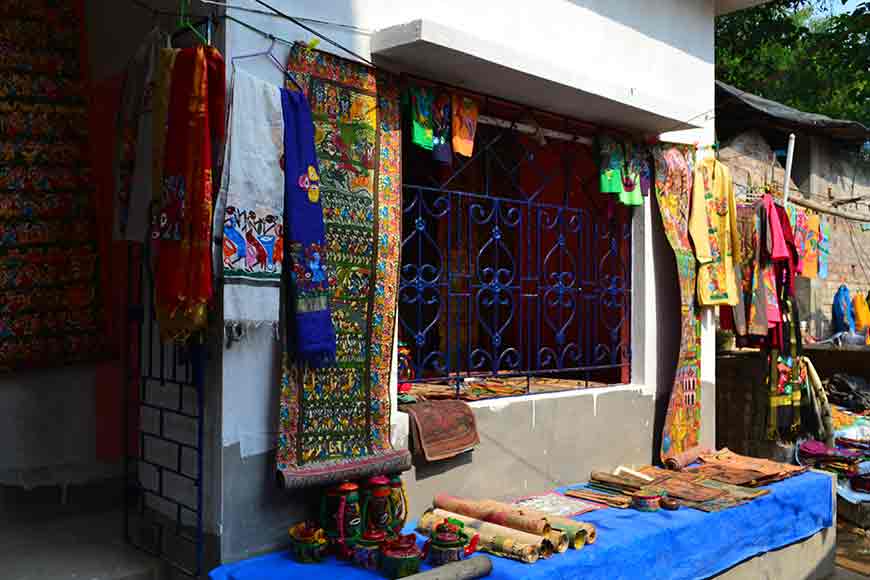Vibrant colours of Pot Maya Festival of Pingla

Terracotta of Bankura, clay dolls of Nadia, Kantha works of Birbhum, Dokra of Purulia, Midnapore and Burdwan – and one can go on naming such amazing work of artisans across districts of Bengal. My quest to soak in one such famed craft of Bengal took me to Paschim Medinipur in West Bengal to get a first-hand feel of this rich cultural tradition of Bengal. And it couldn’t have been a better timing – the annual Pot Maya festival.
Pot Maya festival is a wonderful initiative that has been running for about 15 years now, where Patuas demonstrate their patachitras and hold workshops to take visitors through the process of creating such patachitras, that helps to spread the craftsmanship of the Patuas far and wide. While people like Anwar Chitrakar has won President’s medal, many like Yakub Chitrakar, Moyna Chitrakar and Manimala Chitrakar have travelled across the globe as part of Art & Crafts exchange programs and exhibitions.
 Artworks of Pingla
Artworks of Pingla
The Patachitra village is only 20 minutes from Balichak, near Panskura and can be reached by local trains from Howrah. By road, you need to take the NH6, turn left from Debra towards Balichak, go up to Mundamari and then again turn left to reach Naya. The Patachitra of different districts of Bengal are characterized by many peculiarities in colour and design. The one from Manbhum can easily be distinguished by their preference for one particular shade of burnt sienna relieved by white and yellow patches and densely packed composition. In the scrolls of pot of Birbhum, Bankura and Burdwan preference for Indian red background is usually found while the scrolls of Hooghly prefer a dark brown. The Hooghly and Manbhum 'pats' have a modern approach with abstract linear treatment.
Patachitra is an ancient folk art of Bengal. Art lovers all over the world appreciate it for its effortless style of drawings, colours, lines and space usage. The world Pata derived from the Sanskrit word Patta means cloth. The painters are called Patuas. Patuas do not just paint, they also sing as they unfurl the painting scroll to show it to the audience. These songs are known as Pat-er Gaan and this differentiates the art from many other art-forms. Before this caught attention of people beyond the respective villages, the Patuas used to go out in the morning, showing their artwork in nearby villages and explaining those drawings with the songs they used to write and put to tune. The songs range from traditional mythological tales and tribal rituals to stories based on modern Indian history and contemporary issues like protecting forests and preventing spread of HIV/AIDS. Patuas generally use natural colours, which they procure from various trees, leaves, flowers and clays like yellow colour is obtained from turmeric, red from a local fruit called Lotcon, blue from petals of Aparajita flower, green from leaves of Broad Beans (Sheem) tree or Strings beans (Borboti) tree and so on. The colours are then mixed with sap of wood apple tree (bel) as a binder. Long scrolls are the most well-known shape of patachitra. The Patuas slowly unroll them as they share the stories though their songs. Square formats are also popular and seems like has a greater demand because they cost less and are easy to carry.
 Cottage industry at Pingla
Cottage industry at Pingla
Patachitra has even been mentioned in Puranas and Epics. ‘Patuas' and ‘Chitrakars' have been referred to in literary works dating back to more than 2,500 years. Some researchers opine that ‘Patashilpa’ was originally an art form of the Santhal community. I was happy to see the revival of such an ancient artform and how the rare expertise of artisans is being recognized, how they can hope for a better life. What is amazing is the wide range of subjects they use on patas and the religious harmony they depict, when Muslim artists sing and paint Hindu mythology.
As I started driving back home on the dark wintry evening, the village roads opened up a plethora of colorful tints and hues. The ray of hope aroused by the deeply secular beliefs of the artisans, acted as my headlamp on my way back to Kolkata.










